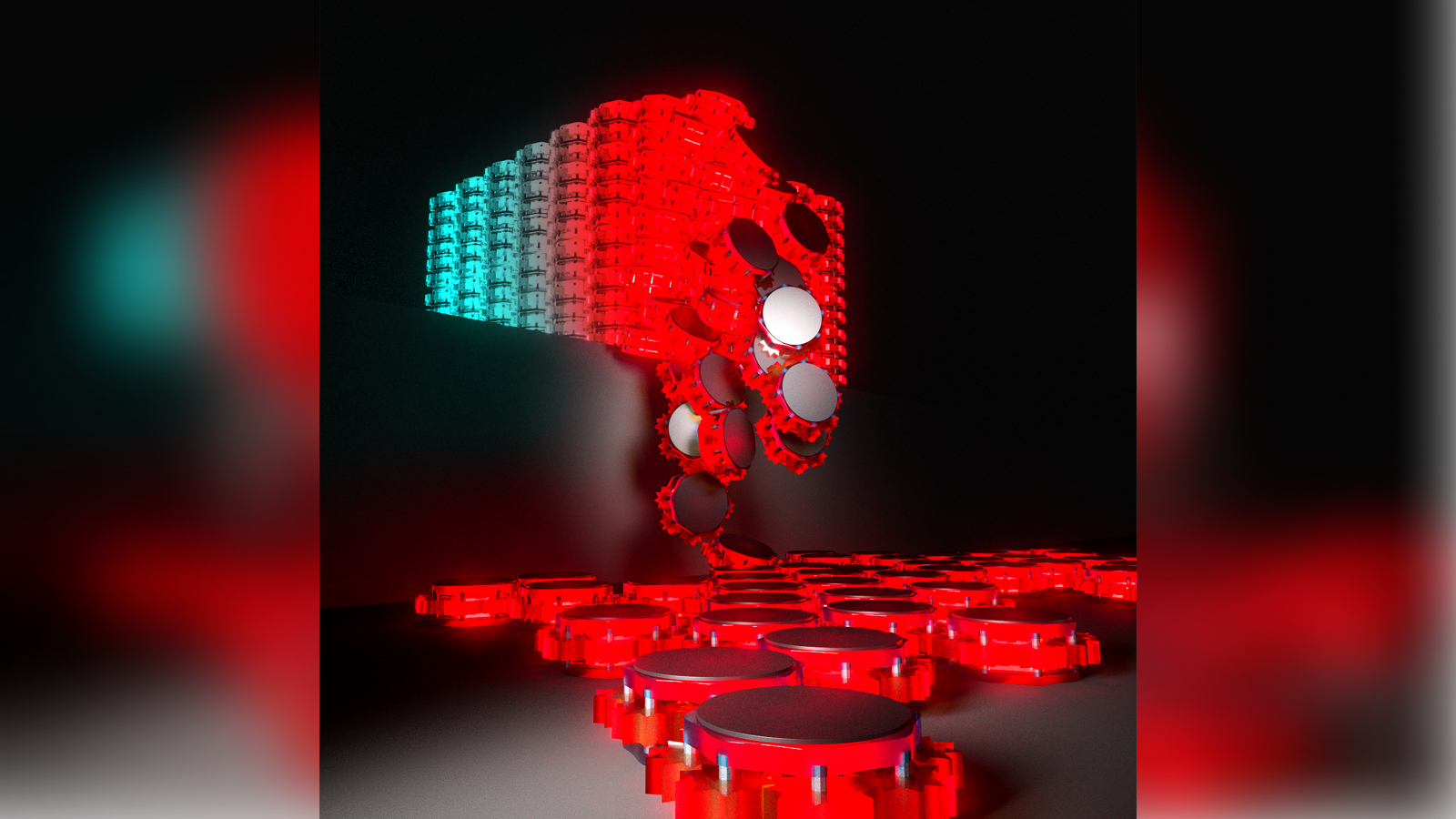
Swarms of hive mind-like robots can be induced to behave more like a material, new research has shown.
The robots in question are (mostly) cylindrical, with a diameter of just 2.75 inches (70 millimeters). The researchers at UC Santa Barbara and TU Dresden used 3D printing technology to manufacture the pieces from polylactic acid.
Each robot has a magnet in its base, yellow gears made out of polylactic acid, and a center with a ring of gears. Collectively, they can perform structure-forming and healing, and support 700 newtons (500 times the weight of a robot). The scientists outlined the structure in a study published Feb. 20 in the journal Science.
The robots move thanks to magnets located in the base. These allow the robots to “naturally stick together and remain cohesive,” according to the lead author of the study Matthew Devlin, Ph.D candidate at UCSB, in an email to Live Science.
“These robots are inspired by developing embryonic cells, which are cohesive and push and pull against each other to form the complex structures of life.”
The gears apply a force pattern that mirrors the behaviors of embryonic tissue cells, for the overall shape and structure to change within a hexagonal lattice structure. Footage provided by the team shows their work in action, with the robots self-organizing into a pattern similar to that of the cells within a honeycomb.
Related: Self-healing ‘living skin’ can make robots more humanlike — and it looks just as creepy as you’d expect
Eight motorized gears enable intracellular forces to become tangential forces that move each unit. This allows the robots to push, pull, and move around one another no matter how narrow a space may be.
One of the team’s primary research goals was creating a material that could be rigid when the situation required it to be, but also adapt itself to assume a softer structure. They also set the goal of wanting the robots to not only take a shape they could maintain but also “selectively flow themselves into a new shape.”
An embryonic technology
A former professor at UC Santa Barbara, Otger Campàs, previously studied how embryos are physically shaped. The work by Campas, currently the director of the Physics of Life Excellence Cluster at TU Dresden, helped inform the team of researchers at his former institution when developing the robots.
Campas’s lab at UCSB had discovered a unique property of embryos — the ability to “sculpt themselves.”
“To sculpt themselves, cells in embryos can make the tissues switch between fluid and solid states; a phenomenon known as rigidity transitions in physics,” Campas said in an article featuring the research, titled “Material-like robotic collectives with spatiotemporal control of strength and shape” published in the journal Science.
Though the team successfully recreated the motions and state transitions of embryonic cells in its robots, Devlin shared with the Live Science team that what he found most fascinating about the experiment was not the change of state from solid to liquid, but the change of strength.
“By fluctuating the magnitude of the forces the gears are applying to each other, the robots can change whether they behave more like a liquid or solid,” Devlin said. He went on to say that his favorite demonstration of this feature occurs when the researcher can stand on the robots.
By completing of a proof-of-concept swarm, and following various simulations conducted by postdoctoral fellow Sangwoo Kim, the team was able to achieve its initial goal of creating and controlling robots to make them act like a material.
The team hopes to explore the scalability of the system, and wish to further study the phase transitions in active matter rather than through the robots. This will help define their hypotheses in order to apply the knowledge accrued in their upcoming research.
